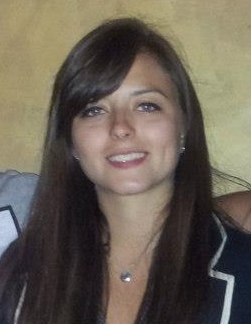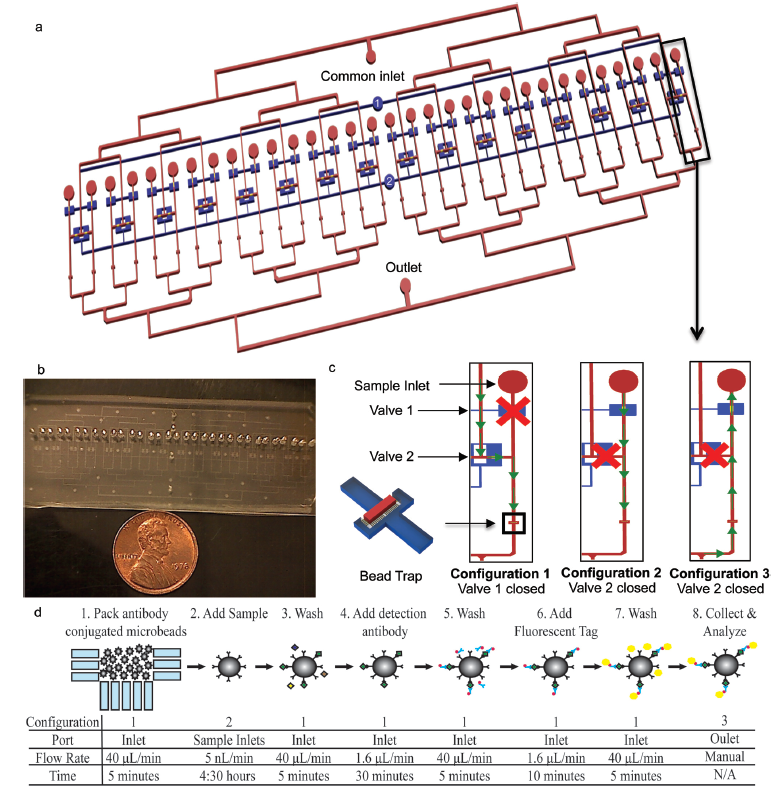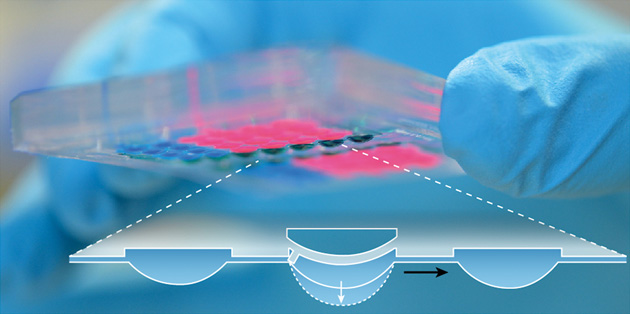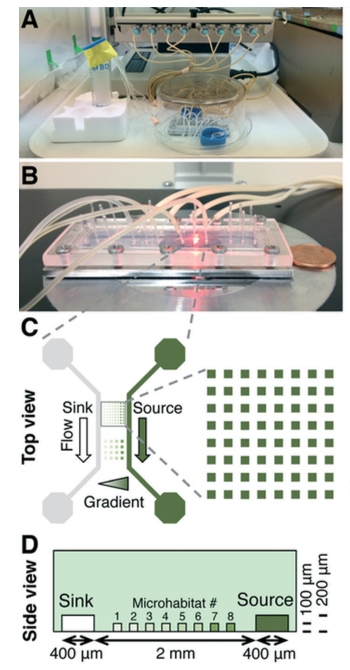Professor Yarmash‘s lab at Rutgers University have developed a proof of concept microfluidic device, capable of running multiple immunoassays in parallel. The device allows 32 samples to be assayed simultaneously and multiple analytes can be tested in each sample.
As shown in the diagram below, each sample inlet has a bead trap that contains antibody-conjugated microbeads. These are commercially available, allowing virtually any analyte to be tested. The sample flows over the beads at an optimised rate, allowing the analytes to bind to their specific antibodies. A secondary antibody is added that binds to antibodies complexed to analytes, followed by a fluorescent tag that binds to the secondary antibody. The microbeads are then collected, placed in a 96 well plate, and analysed.
The authors assayed several proteins from an in vitro supernatant and their results corroborated well with a standard benchtop immunoassay. Compared to the benchtop standard, the device has significantly reduced sample consumption as well as large reductions in microbead and detection antibody consumption. It has comparable sensitivity to the benchtop standard and has a large working range, meaning that analytes present at different concentrations in the sample can be measured simultaneously. In addition to this, it is compatible with commercial reagents and analyte concentration can be quantified. Although previously published devices have addressed some of these characteristics, this the first example where they are combined into one device.
Moving on from their proof-of-concept study, the Yarmash group hopes to develop a device capable of in vivo measurements. One example they give is analysis of cerebrospinal fluid in rats, an important animal model in Alzheimer’s research, where immunoassays are currently limited by the small volumes available.
To download the full article for free* click the link below:
Development and validation of a microfluidic immunoassay capable of multiplexing parallel samples in microliter volumes
Mehdi Ghodbane, Elizabeth C. Stucky, Tim J. Maguire, Rene S. Schloss, David I. Shreiber, Jeffrey D. Zahn and Martin L. Yarmush
Lab Chip, 2015,15, 3211-3221
DOI: 10.1039/C5LC00398A
—————-

About the webwriter
Claire Weston is a PhD student in the Fuchter Group, at Imperial College London. Her work is focused on developing novel photoswitches and photoswitchable inhibitors.
—————-
*Access is free until 19/11/2015 through a registered RSC account – click here to register
















